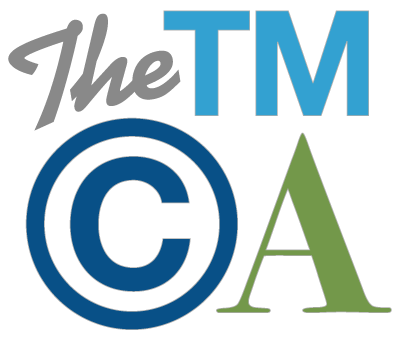Can you Repeat the Question? Supreme Court Hears Oral Argument on the Scope of Damages in Copyright Infringement
 The Supreme Court heard oral argument in February in Warner Chappell Music, Inc. v. Nealy, a case that promised to resolve a split among the U.S. Courts of Appeal relating to the scope of damages available to copyright holders. This post is the second in our series on the Warner v. Nealy case. We previewed the case when the Supreme Court granted cert, and we now share highlights of the oral argument that has taken place.
The Supreme Court heard oral argument in February in Warner Chappell Music, Inc. v. Nealy, a case that promised to resolve a split among the U.S. Courts of Appeal relating to the scope of damages available to copyright holders. This post is the second in our series on the Warner v. Nealy case. We previewed the case when the Supreme Court granted cert, and we now share highlights of the oral argument that has taken place.
The music industry has hoped this case would provide a clear, geographically consistent answer on the issue of whether a party can recover damages for copyright infringement that went undiscovered for more than three years before a lawsuit is filed. The Second, Ninth and Eleventh Circuits all apply some form of a discovery accrual rule, which dictates that a claim arises when a party learns, or a reasonable person should have learned, that another party violated its rights. All three Circuits allow plaintiffs to sue for infringement that occurred more than three years ago, as long as the plaintiff sues within three years of discovering the suit. However, these Circuit courts differ on how the rule impacts a party’s entitlement to a damages award. The Second Circuit will not allow plaintiffs to recover damages for infringement that is older than three years. The Ninth and Eleventh Circuits will allow plaintiffs to recover damages for acts of infringement that occurred more than three years ago. Plaintiffs will presumably favor the Ninth and Eleventh Circuits, whereas defendants would favor the Second.
Before diving into the oral argument, let’s recap the facts briefly.
Factual Background
The plaintiffs Sherman Nealy and Music Specialists Inc. (MSI) filed a Complaint against, among others, Warner Chappell Music, Inc. in December 2018. The plaintiffs sought injunctive relief and damages, claiming Warner had infringed copyrights in several songs, starting in 2008. Nealy did not discover the infringement until early 2016. Through a number of stipulations, the Eleventh Circuit concluded the only remaining question in the case was whether Nealy could recover damages for infringement more than three years old. After the Eleventh Circuit concluded Nealy could seek relief for older damages, Warner filed the petition for a writ of certiorari.
Question Presented
If the question presented seems narrow, that is because it is. Warner petitioned the Court to answer whether the Copyright Act’s statute of limitations (specifically 17 U.S.C. 507(b)) “precludes retrospective relief for acts that occurred more than three years before the filing of a lawsuit.” Warner’s question did not mention the discovery accrual rule. The Court granted cert “limited to” whether plaintiffs can recover damages for acts more than three years old under the statute of limitations and “under the discovery accrual rule applied by the circuit courts.” In other words, the Court arguably instructed the parties to assume the discovery rule applied.
Oral Argument
Warner spent surprisingly little time presenting its position on how to apply the discovery accrual rule. Instead, Warner urged the Court to address whether the discovery accrual rule should exist at all. Justices Barrett, Jackson, and Sotomayor were reluctant to address this broader issue, one they deliberately took off the table when the Court granted cert and rephrased the question presented. Justice Sotomayor questioned Warner’s strategy of merely hinting at this broader question in a footnote, and redirected Warner to the narrower question of how the rule should be applied.
In response to questioning, Warner acknowledged that there is no Circuit split on the validity of the discovery accrual rule, conceding that all Circuits apply it in some form, but still urged the Court to consider this broader question. Justices Alito and Gorsuch appeared to entertain Warner’s broader plea. Justice Alito asked what would happen, hypothetically, if the Court merely dismissed the case and instead waited for a cert petition on this broader issue. He questioned the logic of deciding the scope of application of a rule that may or may not exist itself. Justice Gorsuch added on to this, reminding Nealy and MSI that the Court had cast doubt on the discovery accrual rule in previous opinions.
Nealy and MSI, who did not brief the discovery accrual rule’s broader validity, urged the Court to answer the narrower question presented. However, they did acknowledge that the Court’s dismissal of the case altogether, as improvidently granted, would also be a win for them. They then reminded the Court that there is no Circuit split on the discovery accrual rule’s existence, only on how it applies to the Copyright Act’s statute of limitations.
The Solicitor General, supporting Nealy and MSI, urged the Court to stick to the question presented and sided with the Eleventh and Ninth Circuits, but ultimately did not argue a viewpoint on the existence of the discovery accrual rule. Nor did the Solicitor General state a preference between dismissing the case as improvidently granted or affirming the Eleventh Circuit’s ruling.
The Justices may have already made up their minds on the question presented before oral argument began. Existential questions raised about the cert granted and the validity of the discovery accrual rule loomed over the question of how to apply the rule to the Copyright Act. Stay tuned to the TMCA for an update when the Supreme Court issues their opinion.








